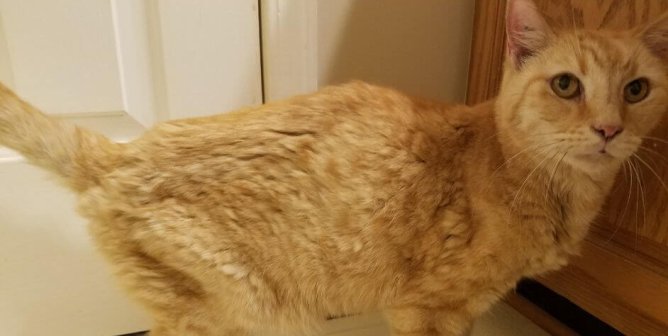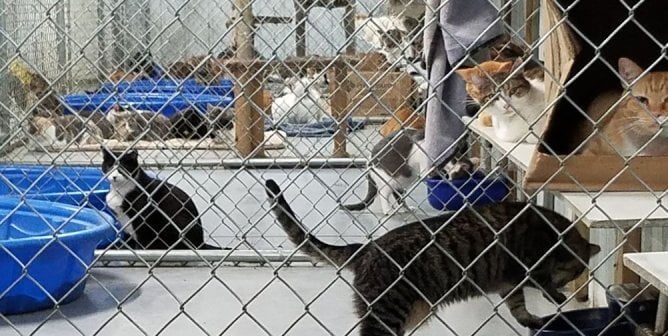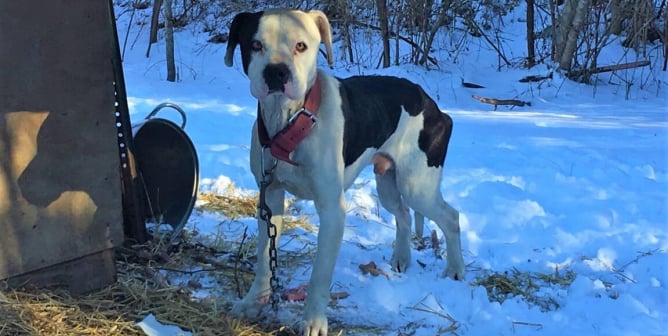Flea Control: Safe Solutions
From collars to sprays to topical solutions, Americans spend millions of dollars on flea-control products every year and unwittingly poison themselves and their animal companions.1 There are safer, more environmentally friendly ways to protect your furry friends and yourself from these pesky insects.
Why Most Flea-Control Products Are Dangerous
The most popular kind of flea control product on the market is the “spot-on” variety, sold under brand names like Frontline® and Advantage™. The active ingredients in these solutions include chemicals such as imidacloprid, fipronil, permethrin, methoprene, and pyriproxyfen, all of which have caused serious health problems in animals in laboratories.2 Even some of the inert ingredients can be hazardous to your animal companion’s health. In 2009, the Environmental Protection Agency received complaints of “adverse reactions” ranging from skin irritation to seizures and death, and has since been “pursuing a series of actions to increase the safety of spot-on pesticide products for flea and tick control for cats and dogs.”which has included calls for tighter regulations and more comprehensive labeling.3
Another popular form of flea control is the chewable tablet. The U.S. Food and Drug Administration (FDA) issued a warning about the isoxazoline class of flea and tick products, used in brand names Bravecto®, Credelio®, Nexgard® and Simparica®. Warning of the “potential for neurologic adverse events in dogs and cats…including muscle tremors, ataxia, and seizures,” the agency advises animal guardians to consult with their veterinarians before using these products.4 These tablets also have been found less effective than topicals.5
Other forms of flea control—powders, collars, and sprays—are no less dangerous to you or your companion animals. Labels may warn not to get these substances on your skin, to wash your hands after applying them, and to keep them away from children, yet these chemicals are absorbed by your animal’s skin. Immediate effects of pesticide overdose include vomiting, diarrhea, trembling, seizures, and respiratory problems. If your dog or cat shows any of these symptoms after the application of a pesticide, immediately wash the product off and seek veterinary care.
Put Out an ‘Unwelcome’ Mat
The first step in flea prevention lies in maintaining your dog or cat’s health. Skin condition is an indicator of an animal’s overall health and an important factor in flea control. The key to healthy skin is a healthy diet. Check food labels carefully. Pet foods sold in supermarkets are often composed of ground-up parts of animals deemed by the U.S. Department of Agriculture to be unfit for human consumption. This is usually listed among the ingredients on the label as “byproducts.” The flesh of animals who fall into one of the categories of the “four Ds”—dead, dying, diseased, or disabled—is what often goes into pet food. Many of these animals have died from infections and other diseases. Most commercial pet food contains the same hormones, pesticides, and antibiotics that are found in meat products for humans.
Just as important as what should be left out of an animal’s diet is what should be included in it. Fresh, whole, raw foods are vital because they provide digestive enzymes and vitamins that can be destroyed by cooking. Vitamin C and B-complex vitamins as well as essential fatty acids are needed for a healthy coat. And coconut oil, which contains caprylic acid, is excellent for combating yeast infections on the skin and in the ears. (Just add it to food.) Also include digestive enzymes and probiotics for good digestive health, which can affect the skin.
If You Have a Flea Problem
Effective flea-control programs employ a multifaceted approach that treats the environment as well as the animal. The following are nontoxic and natural ways that you can help control fleas:
• Black walnut is a very effective flea repellent for dogs when given orally several times a week. It can be purchased in capsules or in liquid form. Give only the minimum effective dose because it can be toxic in higher doses.
• A fine-toothed flea comb is essential and should be used daily to catch fleas. Keep a bowl of soapy water on hand and dip the comb into it after each sweep, or catch the fleas, put them in a container, and then freeze it.
• Vacuum rugs and furniture frequently and launder animals’ bed covers weekly, if necessary, during the flea season. Flea eggs can be collected by vacuuming but can still hatch in the bag, which should be sealed and thrown away, or put in the freezer in a plastic bag after each vacuuming.
• Diatomaceous earth, a powder composed of the fossilized remains of single-celled algae, can be sprinkled on carpets to eliminate fleas safely. Diatomaceous earth is harmless if ingested but should not be inhaled. When applying, remove animals from the area and wear a protective mask. Let the powder sit at least several hours before vacuuming. Look for diatomaceous earth at garden, animal supply, home improvement, and health-food stores, but never use diatomaceous earth that has been chemically treated for use in swimming pools. Ordinary table salt or borax can also be used on carpets and should be vacuumed up the day after use.
• A company called Rx for Fleas (1-800-666-3532) uses a patented nontoxic sodium borate compound that it guarantees for up to one year.
• Products containing beneficial nematodes (microorganisms that eat flea larvae) can be sprayed on lawns and, unlike many toxic treatments, are perfectly safe for animals, birds, and humans, as well as “friendly” garden dwellers, such as earthworms and ladybugs. Brand names such as Interrupt can be found in pet stores and in the lawn-and-garden sections of hardware stores and supermarkets.
• Gentle herbal shampoos are effective and can be used as often as once a week, although too-frequent bathing can dry out animals’ skin. When shampooing, use warm water and begin with a ring of lather around the animal’s neck so that fleas cannot climb onto the animal’s face. Flea-pesticide shampoos and dips are dangerous and are not necessary because soap and water kills fleas.
• To make an effective natural insect repellent for dogs that can be applied daily, add five drops each of tea tree oil, citronella oil, rosemary oil, peppermint oil, and eucalyptus oil to one cup of water, shake it, and put it in a spray bottle. (This smells great, too.)
The Heavy Artillery
For some dogs and cats, just one flea bite can trigger an uncomfortable and damaging skin reaction, so even stronger flea control may be necessary. Insect growth regulators (IGRs), although unfortunately required by law to be tested on animals, are a safe alternative to pesticides. Sold under the brand names Ovitrol, Fleatrol, Precor, and Archer, IGRs contain insect hormones that disrupt the life cycle of the flea by preventing eggs and larvae from developing into adults. IGRs are available from “pest”-control supply companies as well as companion animal supply stores, catalogs, and online. They should be applied to carpets and wooden floors—but not to animals. Another IGR, Program® (lufenuron), is administered to animals orally once a month. However, some animals have suffered adverse reactions to this and other long-term flea control products, so they should be considered for use only in extreme cases.
Where to Find Nontoxic Flea Control Products
• Natural Animal: 1-800-274-7387
• Only Natural Pet Store: 1-888-937-6677
• Pet Sage: 1-800-PET-HLTH
References
1“Nothing Is Too Good for Fido: Pets That Have It All ,” Nielsen.com, 17 Aug. 2015.
2Kathleen Dudley, “Are ‘Spot-On’ Flea Killers Safe?” The Whole Dog Journal Feb. 2002.
3U.S. Environmental Protection Agency, “EPA Evaluation of Pet Spot-on Products: Analysis and Plans for Reducing Harmful Effects,” accessed 7 Apr. 2019.
4U.S. Food and Drug Administration, “Fact Sheet for Pet Owners and Veterinarians about Potential Adverse Events Associated with Isoxazoline Flea and Tick Products,” 21 Sept. 2018.
5F. Beugnet et al., “Comparative Efficacy on Dogs of a Single Topical Treatment with the Pioneer Fipronil/(S)-Methoprene and an Oral Treatment with Spinosad against Ctenocephalides felis,” Parasite, 18(2011): 325-31.







